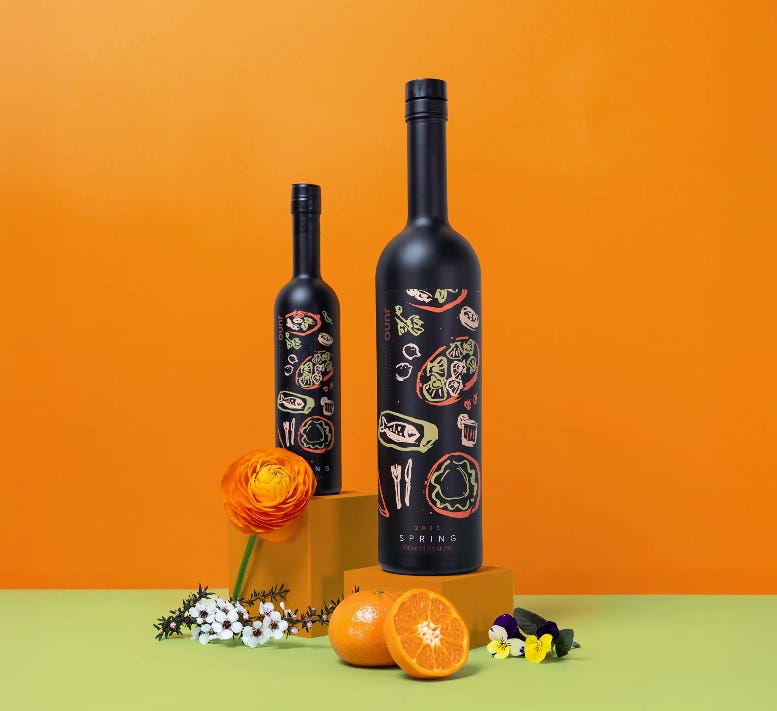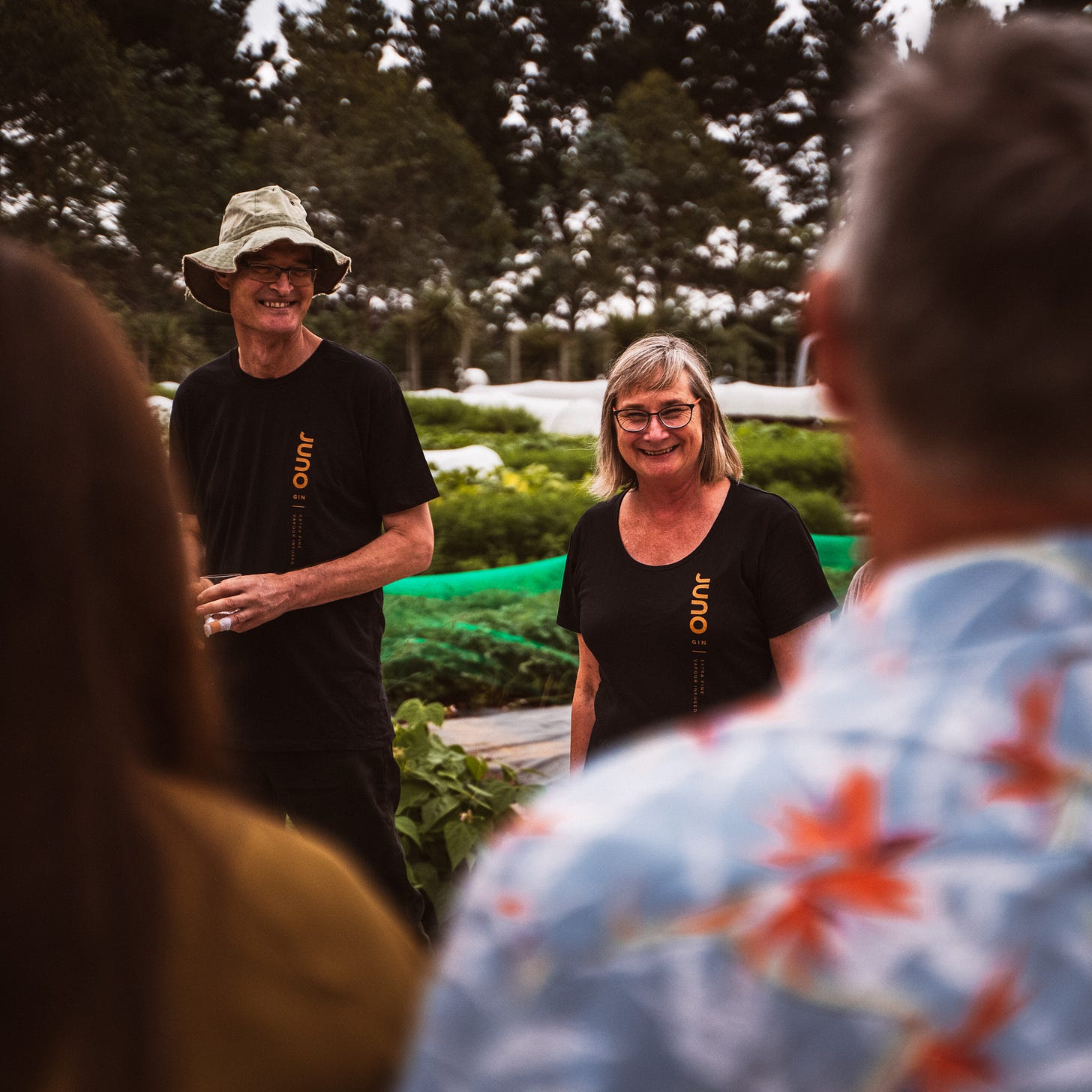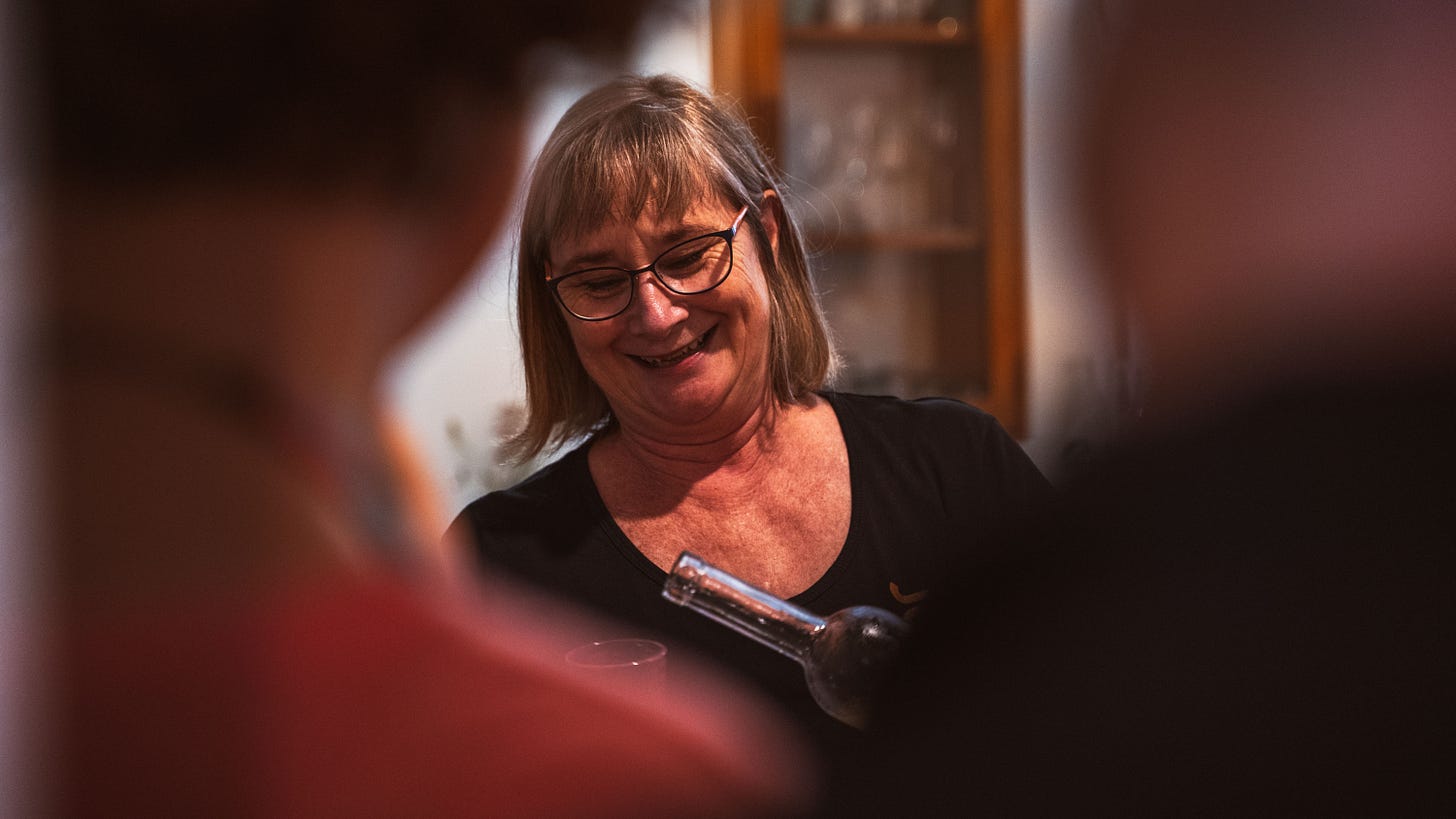Science, Meet the Martini: How Juno’s Geeks Doubled Down on Best in Show
How microbiology, terroir and a $25,000 question led to a double gong show for New Zealand gin.
The trophy shelf at Juno Gin has just been recalibrated. Again. Not just with silverware, but with 2025’s two most coveted national awards—the ‘Best in Show’ titles at both the Super Liquor Super Spirits Awards in July and then the NZ Spirits Awards in August. For co-founder and distiller Jo James, it’s more than just a win; it is, in her words, “a huge piece of validation,” one that “felt like a long time coming.”
But what exactly is being validated? It isn’t merely a great recipe. It is the uncompromising, long-term commitment to a radical idea: that gin, like great wine, can be an expression of terroir—that the very soil, climate, and geography of Aotearoa should not just hold the bottle, but be in it.
Self-confessed geeks
The quest to prove this gin terroir is led by an unassuming pair of distillers: husband-and-wife team, Jo and Dave James. Having met in primary school in New Plymouth, their careers were forged in science and sustainability long before they launched Juno. Jo has a background in genetics and microbiology, with a Master of Public Health in Epidemiology. Dave studied food technology, engineering, and climate change.
Yes, they’re smart. Very smart, in fact. Around the dinner table, there’s no direction or curious avenue of conversation too complex or unapproachable. These are maker’s makers—philosophers, artisans, pragmatic and casually ambitious. Progressive explorers, appreciators of culture and collectors of knowledge, they bring this to their seasonal gin collection with the Blank Canvas competition. Artists can submit their work to be selected for the bottle print, an annual competition that has been running since 2019. If you can pin them down, the James’ are less salt of the earth and more Szechuan pepper and herbaceous seasoning. Fascinating to listen to and rewarding to spend time with.
They are, by their own admission, “sustainability geeks.” This intellectual curiosity and scientific rigour informs their core value: “Make it Right.” This means running a distillery that uses less than five litres of water per litre of spirit (the global average is over 26) and pioneering botanical supply chains. It’s this dedication to traceable, sustainable, and scientifically understood flavour that ultimately separates them and allows them to achieve ‘reproducibly good gin’.
The Audacity of Angelica and the Flavour Fixer
Jo’s philosophy begins with the base. She acknowledges the “appalling” view that vodka is merely a “failed gin,” but asserts that from a distiller’s perspective, a “fabulous base spirit” is the non-negotiable canvas for flavour.
A great base spirit is the quiet, unsung hero of the whole glorious chaos. It’s not shouting, ‘Look at me! I’m grain! I’m potato!’ No, a great base spirit is the cleanest, softest white linen you can imagine—the sort you only find in the deepest, darkest linen cupboard of a grand old house. It’s the silence before the music starts, that moment of perfect, neutral calm that allows the volatile oils of the botanicals—all those juniper sharps and citrus swirls—to dance their intricate little ballet right there on your palate, without any clumsy spirit character elbowing its way onto the stage. If it’s not flawless, the whole performance is a sham.
This rigour extends to the supporting botanicals. Take angelica root, an ingredient often a quiet anchor, which for James, proved the non-intuitive nature of terroir. She found that a high-altitude version of the root, initially “bitter and intense and not all that likeable“ when distilled alone, was actually the one they needed. Its intensity was essential to creating an “incredible balance” when working alongside the other botanicals—a perfect illustration that the worst solo artist often makes for the best bandmate.
“We’ve put all this focus into building relationships with horticulturalists to grow plant ingredients here in New Zealand to then understand terroir effects for each of those ingredients. And they do have terroir effects.”
Similarly, the Orris root, the key “flavour fixer” and aroma binder in quality gin, is central to the Juno method. Their Orris, grown in the Hawke’s Bay region, is the product of long-term planning—a process secured by signing an MOU and funding research with Massey University before they even had a still. This two-year commitment to development ensures a continuous, high-quality supply that they pay over $300 a kilo for. “If you’re not tasting your ingredients before you’re using them,” James asks, “what are you making?”
The reality of much wholesale botanical supply in New Zealand is large-batch importation with customs-required fumigation, storage in inconsistent humidity and stock management before it reaches a distillery. In the same way you must taste your spice for freshness before making a curry, you must know your botanicals.
“So before we even had a still, before we even had office furniture, we had nothing. And we were meeting with a grower and sitting on the carpet in an empty warehouse saying, hey, we’re going to make gin. Do you want to be part of that journey? And this is what it might look like for you. So we signed an MOU with them, and in that MOU, we bought the plants, and we agreed to fund the research work with Massey University, and we agreed to share the research results with our grower so they could then supply to other distilleries, both nationally and internationally.”
The $25,000 Tonne Question: The Great New Zealand Juniper Hunt
The most intellectually provocative element of Juno’s philosophy is their direct confrontation with what we might call the Juniper Crisis. The price of wild-harvested juniper, the essential heart of gin, has soared from $6,000 to over $25,000 a tonne since 2016. Compounded by geopolitical risk and a widespread fungus, this is both a massive economic burden and a sustainability flaw.
“So of course, juniper is a northern hemisphere plant. Doesn’t naturally occur in the southern hemisphere. It is always wild-harvested. There are no plantations of juniper. So you know, when we think about the fact that our distillery will be using up to a tonne of juniper a year. There’s more than 100 distilleries in New Zealand making gin...”
“If we’re looking at building significant export channels for New Zealand premium spirits...and if something is going to be a gin, it has to have juniper in it. And if we’re reliant on international travel to move Juniper around... that’s an economic risk.“
Juno’s response was to launch ‘The Great New Zealand Juniper Hunt’ with Massey University. The goal: to find the sparsely planted Juniperus communis trees scattered across the country, identify male and female plants (critical for producing the berry-like cones), and establish New Zealand’s first commercial plantations. It is, in essence, drawing a meaningful, long bow of economic foresight.
The Ozone Hole and the Flavour Advantage
The findings from Massey’s research projects offer a crucial validation for the vision of New Zealand-grown botanicals. Comparing the native cones with Macedonian and Chinese supplies, they found a distinct difference in the terpenes—the volatile oils that carry flavour and aroma.
New Zealand juniper is “surprisingly floral” and significantly higher in volatile oils and terpenes than imported stock. The scientists attribute this directly to the ozone hole and its downstream effects. Plant species in New Zealand have evolved to produce more volatile oils—a protective activity—in response to the heightened UV and irradiation effects.
This principle applies beyond juniper: “New Zealand coriander seed is really high in limonene,” Jo notes. For a distiller, this means the locally grown raw material is not only more secure and traceable but also possesses a unique, concentrated, and high-impact flavour profile that is fundamentally different and, arguably, better suited for the craft of spirit-making.
All this work with Massey University and Venture Taranaki to understand the terroir, growth opportunity and feasibility of New Zealand-grown botanicals doesn’t just benefit Juno Distillery. The true economic benefit and impact is far reaching, opening up channels for farmers, cultivators and procuring greater stability in future for exporters, not to mention benefits for other New Zealand distillers in future.
This cohesive working relationship between local business, academia and regional development is a testimony to the depth of skill and experience the James’ carry.
Sustained Validation: The True Cost of Quality
The validation of Juno’s two supreme awards is therefore more than just a pat on the back. It is a powerful affirmation that the pursuit of reproducible quality works—be it horticultural, economic or in manufacturing.
“We taste every batch, and we taste before we bottle. So after every batch, each and every day that we make it, we taste it.”
This commitment to flavour consistency and quality across the portfolio was further underlined by their latest medal haul, where they took home eight medals across the Juno and Vesta range. Their flagship Juno Extra Fine Gin and Vesta Vodka each secured Gold Medals—a direct nod to the integrity of both the botanical blend and the foundational base spirit.
Crucially, all four of their 2025 seasonal gins—Autumn, Winter, Spring, and Maia—were individually recognised with Silver or Bronze Medals. “To have each of our 2025 seasonal gins recognised, alongside our other spirits is amazing,” says Jo James.

The results prove that the intellectual framework—embracing the science, investing understanding terroir as a science not just a romantic notion, and demanding excellence from the base up—is not a stroke of luck. It is a philosophy that has made Juno an enduring force in New Zealand spirits. Demonstrating that the geeks can undeniably claim their top gongs in both popularity and reproducibly, very good, excellent gin.






